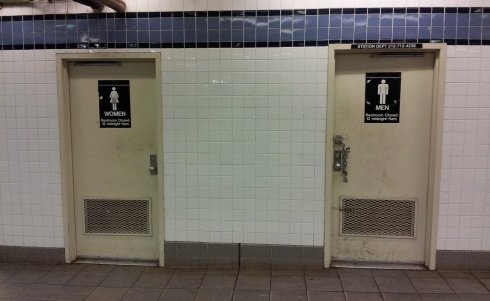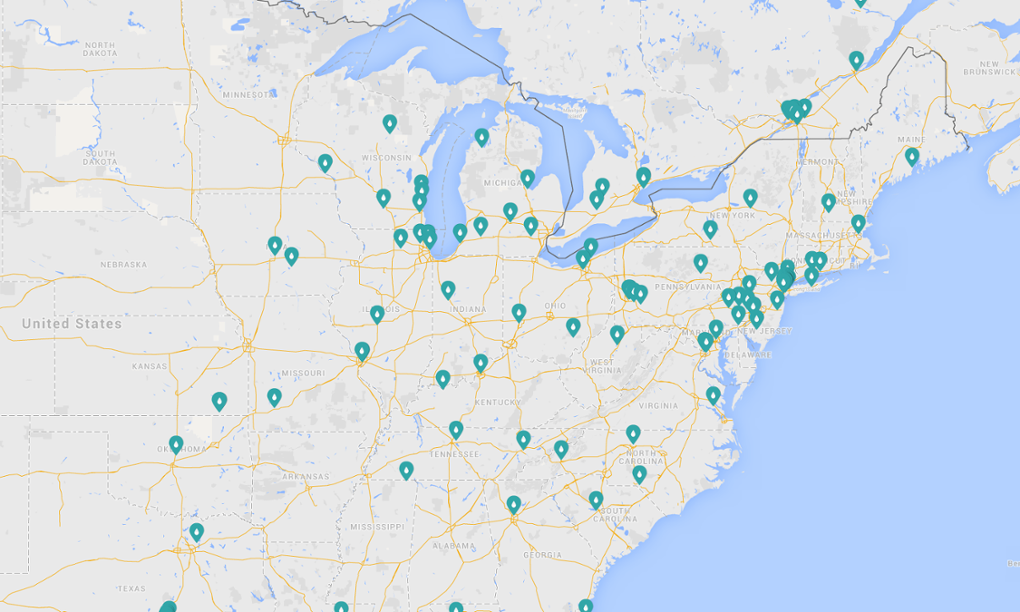Reacting to the poor offering of public amenities across major cities, apps like Airpnp – which allows users to find and use clean private toilets nearby – are filling the gap where government provisions fail.

“The size of the economy, the quality of the architecture, the activity on the sidewalks, the cleanliness of the streets: we can evaluate a city in any number of ways. But in my travels through North America, Europe and Asia, I’ve found no more telling indicator – and at times, no more important one – than the state of its subway station toilets, the true measure of urban civilisation.”
Of course, to use this marker at all presumes a certain degree of development: not only must the city in question have a subway system, but that system must have toilets. Los Angeles, where I live, just barely clears that first hurdle (its long-awaited and much-delayed “subway to the sea” having resumed construction last year) but crashes right into the second. The LA County Metropolitan Transportation Authority, which presides over 80 overground and underground stations, maintains a grand total of three toilets – none of which I use if I can avoid it – and didn’t reply to a request for comment.
Still, by American standards, Los Angeles doesn’t lag as far behind as it may seem to. A US city can count itself lucky if it has rail transit at all, let alone proper facilities. Part of the reason has to do with the country’s deeply entrenched fear of public amenity, as reflected by the words of political humorist PJ O’Rourke:
“Note the mental image evoked by the very word public: public school, public park, public health, public housing. To call something public is to define it as dirty, insufficient and hazardous. The ultimate paradigm of social spending is the public restroom.”

“Throughout the United States there is a general lack of available restrooms for users of public mass transit,” write Robert Brubaker and Carol McCreary of the American Restroom Association. Their paper US Public Health Mandates and the Restroom Problem in America, presented at Delhi’s 2007 World Toilet Summit, finds that “despite broad citizen demand for restrooms, city, town and county governments throughout the United States continue to close public restrooms,” citing “security issues”. These “issues”, they argue, embody a whole gamut of fears ranging from international terrorism, immoral behaviour, to vandalism and misuse of premises for criminal activities.
From our partners:
Chicago stopped installing station toilets in 1958 and started closing the ones they’d already opened in the 1970s, the decade when Washington DC built its subway system, never including any toilets in the first place. Even New York City, transit capital of the nation, usually fails to provide.
“They’re almost nonexistent,” says television producer Alexander Michaelson, who moved there after a long stint in Japan. “In fact, there are many places where restrooms once were but have been converted to storage.” The total number of toilet-equipped stations in New York City currently stands at 77 out of 468, with the number of toilets themselves down to 129 from 1,676 in 1940.

Michaelson remembers a predictably superior subway toilet situation back in Japan, describing Tokyo as on “a whole other level” even when judged by the standards of that land of ultra-convenience, its cities lavishly outfitted not just with toilets but public baths, capsule hotels, and vending machines of every imaginable variety. I certainly couldn’t hold back my own enthusiasm upon noticing the abundance of clean, easily accessible, non-frightening subway station toilets on my first visit there.
My enthusiasm turned to burning envy when I got to Korea. Seoul, the country’s capital of 25 million, boasts a subway system with air conditioning, heated seats, advanced Wi-Fi and mobile phone networks, and, yes, toilets at all of its 622 stations, many of them accessible even before you’ve passed the turnstile.
Photographer and writer Hind Mezaina lives in Dubai, a city he describes as taking pains to maintain “high standards of cleanliness everywhere.” He names its subway system, which opened in 2009, as having the finest facilities he’s seen.
“Each station is very clean – too clean – and sparkly,” he says. “When it comes to the toilets, there’s an attendant who’s around to clean them regularly. There’s no shortage of toilet paper and washing hose (something very common across the Gulf region), and soap, basins, paper towels, and tissue to wash up outside.”
Despite the number and volume of complaints it draws from Londoners, even the Tube does reasonably well on the station-toilet test, though most of them lie at the outer reaches of the system. Some charge a fee for use, to the indignation of visiting Americans who, despite their obsession with crime and suspicion of openness, have never really accepted the pay-toilet concept.

Responding to this situation, a smartphone application called Airpnp, whose name obviously parodies Airbnb, specialises in one sort of room in particular: a user who hears nature’s call can open the app, locate the nearest toilet listed, and, for a price, make use of it.
In a sense, Airpnp functions less like Airbnb than like the taxi “ridesharing” services that have gained as much traction as criticism over the past few years. Just as the popularity of Lyft and Uber in American cities damningly indicts those cities’ inability to build comprehensive and convenient public transportation systems, the surprising success of Airpnp since its launch last year indicts their inability to build toilets for public use.
“There’s no American city that has the situation handled,” says Airpnp co-founder Travis Laurendine, who originally came up with the idea during New Orleans’ Mardi Gras, a festival that brings in countless out-of-towners who, historically, have done a great deal of drinking and a corresponding amount of illegal public urination. When the city outlawed the placement of privately owned portable toilets on public land – long a Mardi Gras entrepreneurial custom – Airpnp took off, there and elsewhere.
“We only expected this to be for New Orleans, but right on the first day, someone put up a bathroom in Washington DC,” says Laurendine, who names the similarly dense and toilet-impoverished New York as another of the cities with the highest numbers of Airpnp-listed toilets. But the top spot belongs to Antwerp: “It’s our biggest city by far. If you zoom in on part of the map there, it’s at full saturation. I recently told somebody from Belgium about it, and he wasn’t surprised. Supposedly that area has more breweries than any other place in Europe. And in Europe, the concept of paying to pee isn’t foreign.”

Might the rise of apps like these, fuelled by serious deficiencies in public infrastructure of the most essential kind, shame city governments into raising their standards? Laurendine has his doubts: “We end up solving the problem for them, so they don’t have to.” But he doesn’t rule out “some kind of public-private partnership,” pointing to Airpnp’s plan to add plain old public restrooms to its maps.
In this technological respect, Transport for London, the operator of the Tube, has actually thought ahead. Last year, they made available a data feed providing information on the London Underground, London Overground, and Docklands Light Railway’s public toilets specifically for the use of app developers, thousands of whom have already signed up to it.
All this may strike some as a step too far into the 21st-century “sharing economy,” but after having used a ridesharing app for the first time last week and realising immediately what I’d been missing out on, I feel confident that Airpnp, though it currently offers fewer than 10 toilets in Los Angeles, will sooner or later come in handy just when I need it most.
This feature is written by Colin Marshall and adapted from The Guardian













